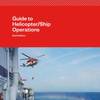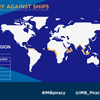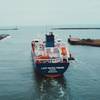Tankers Idle at Big Stone, Puzzling Some
Late last November, the tanker Olympic Flag carrying 650,000 barrels of Angolan crude dropped anchor about 7 miles off the coast in Delaware Bay, a seemingly routine shipment destined for a nearby Philadelphia refinery.
What happened next was anything but routine. Instead of discharging its cargo within days and heading off for the next port, the ship idled offshore for nearly 11 weeks, discharging the oil at an unaccountably slow rate, according to shipping sources as well as vessel tracking data on ThomsonReuters Eikon.
That vessel finally set sail two weeks ago - but by then it had already been joined by five more idling tankers, an unusual and costly congregation that has puzzled experts and traders. All the vessels arrived by mid-January, and four of them are expected to stay in the waterway for up to five more weeks.
The cause of the tanker jam - which at its peak involved more than 3.5 million barrels of crude, worth an estimated $175 million even at currently low prices - is not at all clear. The extended stays have even raised concerns about the welfare of sailors aboard the vessels.
All six of the tankers appear to have been destined for Philadelphia Energy Solutions, the 335,000-barrel-per-day (bpd) refinery co-owned by The Carlyle Group and a subsidiary of Energy Transfer Partners, L.P.. Five of the cargoes were imported by the company itself or banks that finance their supplies, according to customs data. The sixth discharged at a Delaware River terminal used by PES, tracking data show.
One person familiar with the tankers said they are "drip feeding" crude into the plant, a rare set-up that may be caused by a lack of onshore storage space for these particular varieties of crude, or limitations on the rate at which the infrastructure can receive supplies, the person said.
Others say that might explain a prolonged stopover, but doesn't explain a months-long pause. PES, or other charterers, are paying a daily rate to keep the vessels idle.
"Crude ships queue and un-queue all the time. Just normal business cycles," Philadelphia Energy Solutions spokeswoman Cherice Corley said in an email when asked about the tankers. She declined any further comment on the issue.
Repeated attempts to contact the owners or managers of the ships, most based on Greece, were unsuccessful.
Some sources speculated that the tankers might be related to the revival of the "floating storage" trade, in which traders can make money by buying deeply discounted immediate-delivery crude oil and waiting to sell it months later when prices rally.
Yet while some two dozen supertankers have recently been chartered across the world for this purposes, the tankers off Delaware are generally too small - and arrived too early - to capitalize on the trade, traders say.
BIG STONE FOR LIGHTERING, NOT PARKING
Big Stone anchorage, a stretch of water a few miles off the coast of Delaware and New Jersey, is usually used for lightering ships - using barges to siphon off crude so that the tankers are light enough to enter the ports. Typically, this takes less than a week, local shipping sources told Reuters.
The Value, an Aframax tanker from Canada, arrived on Dec. 15 and has yet to depart. It loitered so long that it ran out of fuel in early January, according to the U.S. Coast Guard.
The Toska, which left Nigeria with an estimated one million barrels of Qua Iboe crude in late November, has been there since Dec. 13, but has discharged only about one-third of its cargo, according to customs data from PIERS available on Eikon.
The Minerva Helen, carrying 710,000 barrels of Canadian White Rose crude, arrived Nov. 27, the same day that OPEC's decision to preserve production levels sent crude markets into a tailspin. It is not scheduled to depart until March 3, according to the Seaman's Church Institute of Philadelphia, a non-profit that monitors activity at the port.
The importers of record include two banks: JPMorgan Chase & Co., which had a contract supplying and financing crude to PES; and Bank of America unit Merrill Lynch Commodities, which took over that contract late last year. Two cargoes were received directly by PES, and the last one by ExxonMobil, according to customs data collected by PIERS and available via Eikon's Trade Flows database.
There are no fees for staying at the Big Stone anchorage, and no restrictions on how long ships can stay there, according to the Coast Guard.
"We are concerned. They have been out there for a long time," says Reverend Peter Stube, the head of the Seaman's Church, which looks after the welfare of sailors that come into the city's port. "I hope they have proper food and water."
Reporting By Jarrett Renshaw













